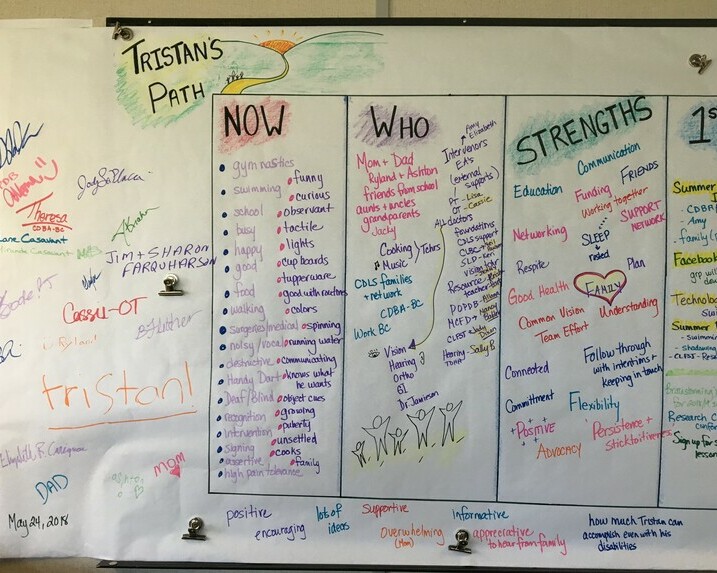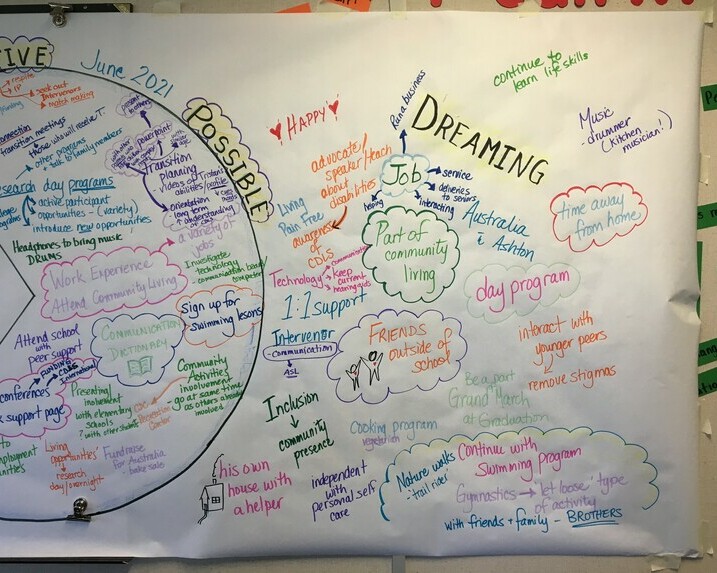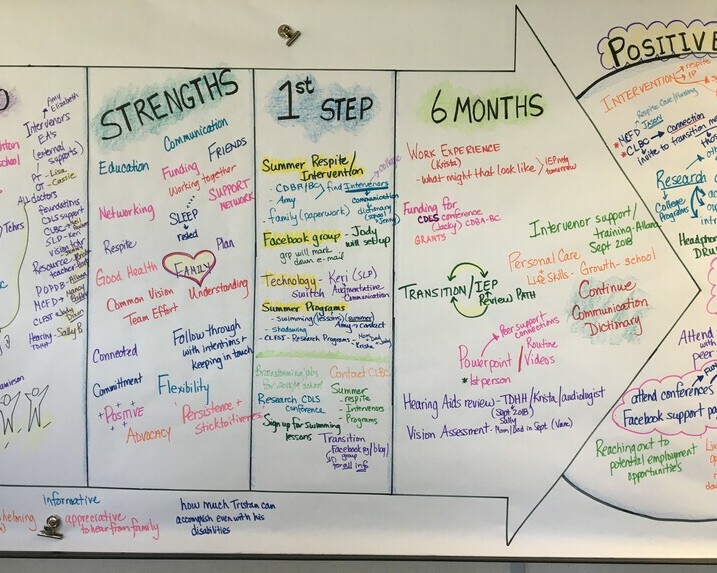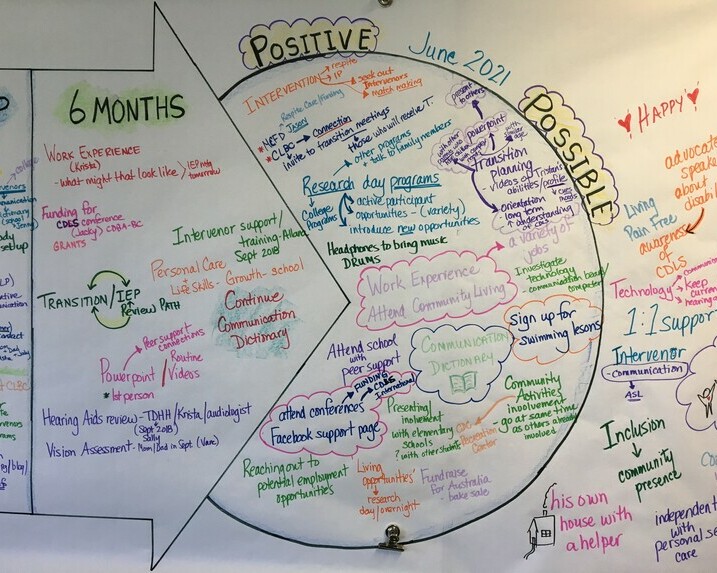Resources for Facilitating Transitions for Students with Deafblindness
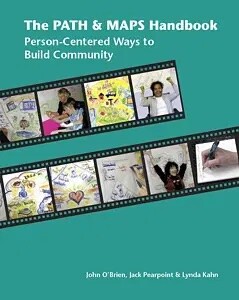
By Sheila McIntosh
When a student is in the transition process from high school to adult services (or possibly other major events in their life), a transition tool that might be suggested is a MAP or a PATH. You may be wondering what these are. MAPS and PATH are intended to creatively help individuals, their families and support systems plan for a positive future. Both are person centered, collaborative and are seen as a way to build community and to celebrate planning for the future. They are “designed to identify do-able action steps in the direction of desirable futures” (O’Brien & Pearpoint, 2015).
MAPS or PATH involve gathering key people in the student’s life: family and those who support them in the present and those who will support the student and family beyond school. The MAPS or PATH process is typically a two-to-three-hour meeting in which the life and future of the student /focus person is honoured and celebrated and support circles are created.
Generally, the student’s family and school team would decide that it would be the time to do a MAPS or PATH. Once that has been determined, looking for the facilitators would be the next step. Often the school district will have people who are trained to facilitate these processes. Outside of school, the Canadian Deafblind Association – British Columbia can provide a facilitator. Other organizations that are involved in transition may also have trained facilitators available to them.
There are usually two facilitators who will organize and guide the process and who have been trained to facilitate. The facilitators take training through organizations such as Inclusion Press with John O’Brien, Jack Pierpont and Linda Kahn, some of the originators of MAPS/PATH. Facilitators hopefully have been trained to follow the intended process of the creators of person-centered planning.
The two facilitators each have a specific role - one a process facilitator and the other a graphic facilitator.
- The process facilitator guides the process. They gently lead the planning circle through several stages of questions and focusses and ensure that the focus person is always at the centre.
- The graphic facilitator draws and “listens with their hands, reflecting the group’s work in the graphic record, summarizing key ideas…in creating images that deepen exploration” (O’Brien, Pearpoint, & Kahn, 2017).
MAPS: Making Action Plans
MAPS is used when the goal and plan is in progress or not clear. MAPS focus on assessing gifts and dreams to move forward. MAPS start from story and celebrates the journey to move forward. “Maps encourages people to tell their story: to create a rich portrait of their life journey” (O’Brien &Pearpoint, 2015). Often the story of the focus person is told with family involvement as the story of the individual’s journey is also a story of the family’s journey.
The MAPS process:
- hearing the story
- honoring the dream
- recognizing the nightmare
- naming gifts
- what it takes
- making action plans
From history to action.
PATH: Planning Alternative Tomorrows with Hope
A PATH would be determined to be the best mode for the focus person when a goal or dream has been decided upon. That goal is considered the North Star and that is where the process begins. The step of a PATH are:
- locating the north star
- generating a vision
- describing the now
- inviting enrolment
- developing strength
- identifying bold steps
- organizing the next month
- agreeing on next steps
PATH explores “what can happen because of you and your allies that will make your life better and build your community” (O’Brien, Pearpoint, & Kahn, 2017).
Conclusion
MAPS and PATH are powerful, joyful tools to help to see the big picture in the transition process. An opportunity to share where the journey began and where it is going. Person-centered within a shared vision. A true celebration.
References
O’Brien, J., Pearpoint, J., & Kahn, L. (2017). The PATHS and MAPS Handbook: Person-Centered Ways to Build Community (3rd ed.). Inclusion Press.
Pearpoint, J. & O’Brien, J. (2015). Person-Centered Planning with MAPS and PATH: A Workbook for Facilitators (5th ed.). Inclusion Press.
